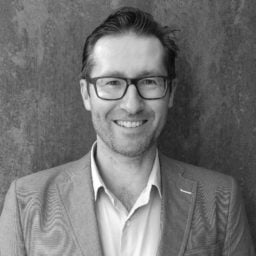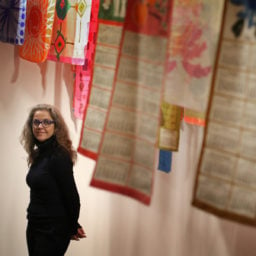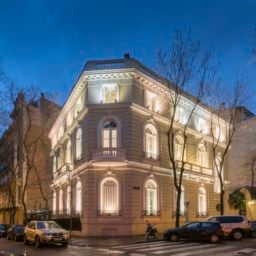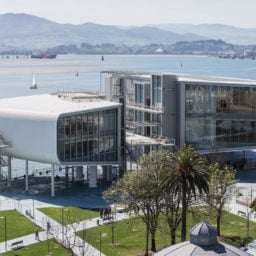London’s “lost” river Walbrook, which the Victorians built over, appears to have been uncovered this week. The Spanish artist Cristina Iglesias’s Forgotten Streams (2017) now flows gently through the heart of the capital’s financial district, appearing in three places in the pavement outside financial media giant Bloomberg’s new £1 billion ($1.3 billion) headquarters. It is her first public work in London.
The monumental sculpture is just one of a number of works by major artists that will grab employees’ attention at the new Norman Foster-designed office for Michael Bloomberg’s European staff. Michael Craig-Martin, Arturo Herrera, David Tremlett, and Pae White were also commissioned to create site-specific works.

Cristina Iglesias, Forgotten Streams, Bloomberg London
Inside the office complex, Eliasson has installed a work that recreates the reflective surface of a pond at the bottom of a spectacular ramp that spirals through the building. A companion piece forms the ceiling of the foyer. The Danish-Icelandic artist’s two-part work, No future is possible without a past (2017), is made of more than 400 square meters of aluminum.
Langlands & Bell’s neon Frozen Sky (1999) is on the sixth floor. The ring of 45 three-letter acronyms are the codes of international airports around the globe, from LHR to LAX.
The cost of the six commissions and purchase was undisclosed.
Bloomberg, the billionaire philanthropist, former mayor of New York, and founder of the eponymous company, was in London this week for the office’s official unveiling on Tuesday, as was architect Norman Foster and many of the commissioned artists. (Such is the power of Bloomberg and Foster’s joint patronage.)
Both self-made men took a hands-on approach to the building’s design, which aims to impress visitors and encourage collaboration among the company’s more than 4,500 employees based in London.

(L-R) London Mayor Sadiq Khan, Chief Executive Officer of media company Bloomberg Michael Bloomberg, Spanish artist Cristina Iglesias and architect Norman Foster pose together at the launch of Bloombergs new European Headquarters in the City of London on October 24, 2017. AFP/Daniel LEAL-OLIVAS/Getty Images
Mayor of London Sadiq Khan traveled from City Hall—his own Foster + Partners-designed workplace across the Thames—to help launch the flagship building. The Bloomberg HQ, like other prestigious workplaces the architect has designed, traces its origins to an early commission to build a humble toilet block in what was then London’s Docklands more than 50 years ago.
As Foster writes in his book Talking and Writing, published earlier this year, he persuaded the Norwegian shipping magnate Fred Olsen to allow him to create what he called an “Amenity Centre,” a workplace that was unprecedented for the class-ridden times. The space included not only proper showers but also a canteen, darts, and a ping-pong table for staff to use between shifts. Dockers, management, and secretaries ultimately came together under one, high-tech roof.
The Olsen building is long gone in what is now Canary Wharf, but it led to commissions to design workplaces from Hong Kong to New York, including Apple’s Campus 2 in Silicon Valley and, now, Bloomberg’s European headquarters.
Amenities in the new Bloomberg building include a contemporary art gallery on the ground floor, which is due to open in November. Called Bloomberg Space, it also houses an archaeology museum that displays the remains of the Mithraeum. The Roman temple was first uncovered on the site in the 1950s. Ahead of construction of the new building, archaeologists found many more objects, highlights of which will be part of the new display.











